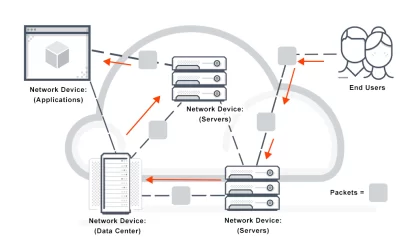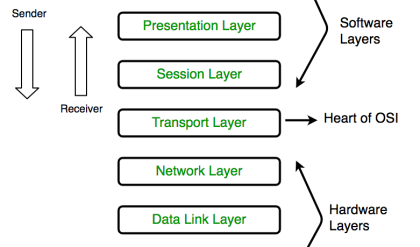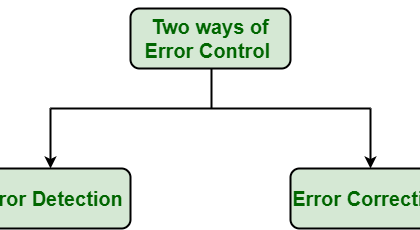Introduction
In this section we discuss two-wire and four-wire transmission and two impairments that are commonly caused by two-wire-to-four-wire conversion equipment. These impairments are echo and singing. The second part of this section is an introduction to multiplexing. Multiplexing allows two or more communication channels to share the same transmission bearer facility.
Two-Wire and Four-Wire Transmission
Two-Wire Transmission
A telephone conversation inherently requires transmission in both directions. When both directions are carried on the same pair of wires, it is called two-wire transmission. The telephones in our homes and offices are connected to a local switching center (exchange) by means of two-wire circuits. A more proper definition for transmitting and switching purposes is that when oppositely directed portions of a single telephone conversation occur over the same electrical transmission channel or path, we call this two-wire operation.
Four-Wire Transmission
Carrier and radio systems require that oppositely directed portions of a single conversation occur over separate transmission channels or paths (or use mutually exclusive time periods). Thus we have two wires for the transmit path and two wires for the receive path, or a total of four wires, for a full-duplex (two-way) telephone conversation. For almost all operational telephone systems, the end instrument (i.e., the telephone subset) is connected to its intervening network on a two-wire basis.
Nearly all long-distance (toll) telephone connections traverse four-wire links. From the near-end user the connection to the long-distance network is two-wire or via a two wire link. Likewise, the far-end user is also connected to the long-distance (toll) network via a two-wire link. Such a long-distance connection is shown in Figure 4.14. Schematically, the four-wire interconnection is shown as if it were a single-channel wire-line

with amplifiers. However, it would more likely be a multichannel multiplexed configuration on wire/fiber-optic cable or over radio. Nevertheless, the amplifiers in Figure 4.14 serve to convey the ideas this section considers. As illustrated in Figure 4.14, conversion from two-wire to four-wire operation is carried out by a hybrid, which is a four-port, four-winding transformer.
Operation of a Hybrid
A hybrid, in terms of telephony (at voice frequency), is a transformer with four separate windings. Based on a simplified description, a hybrid may be viewed as a power splitter with four sets of wire-pair connections. A functional block diagram of a hybrid device is shown in Figure 4.15. Two of the wire-pair connections belong to the four-wire path, which consists of a transmit pair and a receive pair. The third pair is a connection to the two-wire link, which is eventually connected to the subscriber subset via one or more switches. The last pair of the four connects the hybrid to a resistance–capacitance balancing network, which electrically balances the hybrid with the two-wire connection to the subscriber subset over the frequency range of the balancing network. Balancing, in this context, means matching impedances—that is, the impedance of the two-wire side to the hybrid two-wire port.
Signal energy entering from the two-wire subset connection divides equally. Half of it dissipates (as heat) in the impedance of the four-wire side receive path and the other half goes to the four-wire side transmit path, as illustrated in Figure 4.15. Here the ideal situation is that no energy is to be dissipated by the balancing network (i.e., there is

a perfect balance or impedance match). The balancing network is supposed to display the characteristic impedance of the two-wire line (subscriber connection) to the hybrid.14 Signal energy entering from the four-wire side receive path is also split in half in the ideal situation where there is a perfect balance (i.e., a perfect match). Half of the energy is dissipated by the balancing network (N) and half at the two-wire port (L) (see Figure 4.15.)
The reader should note that in the description of a hybrid, in every case, ideally half of the signal energy entering the hybrid is used to advantage and half is dissipated or wasted. Also keep in mind that any passive device inserted in a circuit, such as a hybrid, has an insertion loss. As a rule of thumb, we say that the insertion loss of a hybrid is 0.5 dB. Thus there are two losses here that the reader must not lose sight of:

As far as this section is concerned, any signal passing through a hybrid suffers a 3.5-dB loss. This is a good design number for gross engineering practice. However, some hybrids used on short subscriber connections purposely have higher losses, as do special resistance-type hybrids.
In Figure 4.15, consider the balancing network (N) and the two-wire side of the hybrid (L). In all probability (L), the two-wire side will connect to a subscriber through at least one switch. Thus the two-wire port on the hybrid could look into at least 10,000 possible subscriber connections: some short loops, some long loops, and some loops in poor condition. Because of the fixed conditions on the four-wire side, we can generally depend on holding a good impedance match. Our concern under these conditions is the impedance match on the two-wire side—that is, the impedance match between the compromise network (N) and the two-wire side (L). Here the impedance can have high variability from one subscriber loop to another.
We measure the capability of impedance match by return loss. In this particular case we call it balance return loss:

Let us say, for argument’s sake, that we have a perfect match. In other words, the impedance of the two-wire subscriber loop side (L) on this particular call was exactly 900 and the balancing network (N) was 900 . Substitute these numbers in the preceding formula above and we get

Examine the denominator. It is zero. Any number divided by zero is infinity. Thus we have an infinitely high return loss. And this happens when we have a perfect match, an ideal condition. Of course it is seldom realized in real life. In real life we find that the balance return loss for a large population of hybrids connected in service and serving a large population of two-wire users has a median more on the order of 11 dB with a

standard deviation of 3 dB (Ref. 4). This is valid for North America. For some other areas of the world, balance return loss median may be lower with a larger standard deviation.
When the return loss becomes low (i.e., there is a poor impedance match), there is a reflection of the speech signal. That is, speech energy from the talker at her/his distant hybrid leaks across from the four-wire receive to the four-wire transmit side (see Figure 4.15). This signal energy is heard by the talker. It is delayed due to the propagation time. This is echo, which can be a major impairment depending on its intensity and amount of time it is delayed. It can also be very disruptive on a data circuit.
We define the cause of echo as any impedance mismatch in the circuit. It is most commonly caused by this mismatch that occurs at the hybrid. Echo that is excessive becomes singing. Singing is caused by high positive feedback on the intervening amplifiers (Figure 4.14). Singing on the analog network could take the network down by overloading multiplex equipment. The possibility of singing on the digital network is very low. The control of echo and singing is discussed in Chapter 8. Figure 4.16 is a schematic diagram of a hybrid circuit.






Comments are closed.